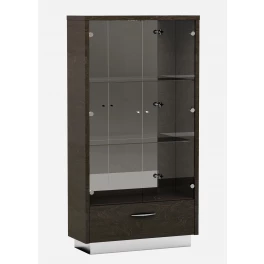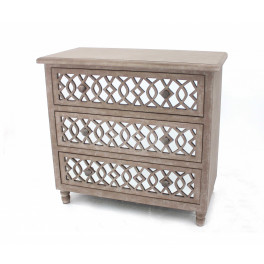If you’re setting up a garage workshop, if you’re a DIYer, or if you’re just a new homeowner, you may be asking, “Do I need to buy an air compressor?” That’s a good question.
An air compressor can be handy to have around, but at a cost of between $100 on the very low end to several hundred dollars or more on the high end, it may not be handy enough to justify its cost, unless you have air tools that require it.
To help you decide whether to buy an air compressor for home use, here’s a brief overview of air compressor features and capacities, along with a few ways an air compressor can serve you.
Air Compressor Buying Guide
Keep these six things in mind when you’re looking at air compressors:
1. Specifications
2. Size and weight
3. Power source
4. Single- or two-stage
5. Oil or oil-less
6. Extras
Here’s what each of these items means.
1. Specifications
If you start shopping for an air compressor, you’re going to notice that air compressors have a lot of specifications. You’re going to see CFM (cubic feet per minute), PSI (pounds per square inch), HP (horsepower), gallon, and dB (decibels).
Here’s what these specs mean and how to pick the right specs for your needs.
CFM
If you’ve already done some research on air compressors, you’re probably already beyond our initial question about whether to buy an air compressor. You’ve moved on to, “What CFM air compressor do I need?” You’re asking a smart question. Of all the specs you’ll find on air compressors, CFM is the most important.
CFM is a measurement of how fast the air compressor gets air to whatever it’s you want it for. This is an important consideration because if the tool you have connected to a compressor is using air faster than your compressor can supply it, you’ll have a frustrating time using that tool.
Knowing what tool you want to use with an air compressor will help you choose the right CFM. Here’s a short list of some of the most commonly-used pneumatic tools and their CFM requirements (if you have another tool in mind, just do a quick online search to find its CFM requirements):
- Framing nailer: 2-2.5 CFM
- Brad nailer: 0.03 CFM
- Drill: 3-6 CFM
- Orbital sander: 6-9 CFM
- Dual Sander: 11-13 CFM
- Paint sprayer: 10-14 CFM
Most household portable air compressors have a CFM that ranges from 0.6 to 2.8. From the above list, you can see that if you intend to use the compressor for sanding or spray painting you’ll need a compressor with more CFM.
PSI
Unlike CFM, PSI isn’t usually that important when choosing an air compressor. Most compressors on the market have enough PSI for all common tools. PSI can come into play, however, if you’re buying a compressor with a smaller tank (see "Gallon" below). A smaller tank with a larger PSI can match a larger tank with a smaller PSI.
Gallon
The gallon spec on an air compressor refers to the number of gallons of air the compressor’s tank or tanks can hold. Most household compressors have tanks that range from one to six gallons. The larger the tank, the more air you’ll have to use before the pressure drops off and the compressor’s motor starts running to refill the tank. Larger tanks allow you to work longer without stopping to wait for a tank to refill. Most small, portable air compressors will have 2- to 60-gallon tanks. The former are useful only for small tasks like filling a tire. The latter can be used to power air tools. Air compressors with 60- to 80-gallon tanks are stationary compressors for big jobs.
HP
HP refers to the motor’s power. Horsepower is a term most of us have heard but probably don’t know what exactly it refers to. Just so you can add to your knowledge bank, horsepower is 550 foot-pounds per second. Don’t worry. You don’t need to understand that to buy an air compressor. The bottom line for HP in air compressors is that it’s not much of a factor. Any air compressor you buy will have enough HP to power the motor to fill the tanks.
dB
dB is a measurement of decibels. It tells you how loud the compressor will be. Compressors are not quiet, but if noise is an issue for you, keep in mind that every 10 dB doubles the noise level. So an air compressor that’s rated at 80 dB will sound four times louder than one rated at 60 dB.
2. Size and Weight
Size and weight come into play when you consider where you intend to use your air compressor. If you intend to tote it around, you want to choose an air compressor that’s lighter and smaller, as well as slim and portable in shape. If it’s going to remain in one location in your workshop, however, it doesn’t matter that much how big or heavy it’s.
3. Power Source
Air compressors are powered either by electricity or gas. Most household air compressors are electric, and they’re a good choice for indoor use because they don’t emit fumes.

Photo by Christina Richards on Shutterstock
Gas air compressors can be more powerful than electrical compressors, but they’re commonly used only by builders or contractors. Because of the fume issue, these compressors must be run outdoors or in a well-ventilated area.
4. Single-Stage or Two-Stage
Single-stage and two-stage refer to the way an air compressor supplies air to the cylinder or cylinders. In single-stage compressors, air is compressed at the same output pressure at all times. In two-stage compressors, the two cylinders are functioning differently. The first-stage cylinder does an initial air compression, and the second-stage cylinder compresses the air further. Why does this matter? This two-stage functioning stores more air. This allows tools to run longer without waiting for a compressor’s tank to refill. If you’re going to use a compressor for high-demand tools, a two-stage compressor is preferable.
5. Oil or Oil-Less
Oil-lubricated compressors, as their name suggests, have parts that require oil to lubricate the compressor’s moving parts. These compressors are usually larger, and they’ll have a dip-stick near the motor.
Oil-free compressors have piston rings made from a non-stick material so lubrication is not required. This type of compressor is smaller and lighter and is usually the better choice for home use.
6. Extras
Here are a few extra things to look for in an air compressor.
- An air cooling system will give the compressor’s motor a longer life.
- A thermal overload switch will automatically stop the motor if it overheats. This protects the compressor and will probably extend its life.
- ASME certification means that the compressor meets the standards of the American Society of Mechanical Engineers.
Air Compressor Uses
So now that you have a better understanding of compressors, what can you do with one? In addition to the obvious use of filling flat tires, here are three additional common home uses for a compressor.
Power a brad nailer for quickly assembling craft projects or a finishing nailer for bigger building projects.
Make quick work of painting jobs with a spray painter.
Power tools, especially saws, can get clogged with sawdust. You can clean your saws easily by aiming compressed air at them. A long hose will help you reach all the areas in your shop.
Although an air compressor might not make the list of tools every homeowner should have, it can be a useful helper. Now that you have a better understanding of air compressors and their uses, you can make a smart decision about whether an air compressor is right for you, and if so, which one you should choose.


























